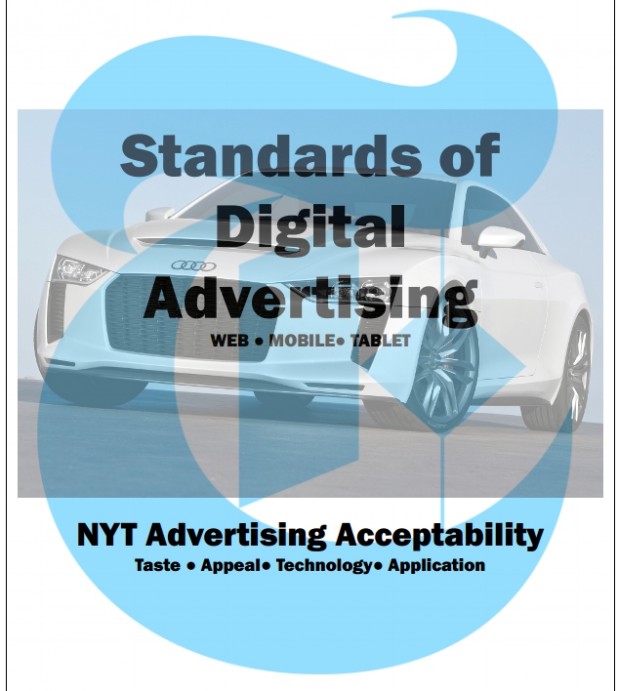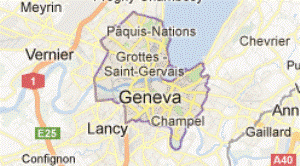ENVIRONMENT » INTERNATIONAL ADWATCH » NYT ADVERTISING » NYT POLICY
Climb Every Mountain with your Off-Piste Audi quattro
January 28, 2014 · 0 Comments

By Robert Waterhouse
It was published a couple of days before Michael Schumacher’s traumatic skiing accident in the French Alps, and one may assume that Audi would have pulled the ad in the circumstances, but page 5 in the issue of weekend December 28-29 2013 bore a startling message from the German carmaker.
"Our new year’s resolution: less road.
A happy 2014 to all from Audi quattro."
The page depicted an off-piste scenario featuring the tracks of a vehicle which had crossed a snowbound road and headed straight up a mountainside. The Sound of Music meets Vorsprung durch Technic.
Would a saloon car, even one with Audi’s celebrated four wheel drive, really be able to launch itself up a 45-degree slope of deep virgin snow?
Not really. Perhaps that was meant to be a joke. Again, we’ll give Audi the benefit of the doubt.
But as a slogan for 2014, "less road" - when it means endangering nature’s ever-more-fragile balance in the era of global warming, with the added risk of creating or being caught in avalanches – is simply irresponsible.
It’s the sort of thing we associate with Jeremy Clarkson and the BBC’s bad-boy "Top Gear" series. Even he has moderated his stance somewhat (and his apparent anti-environmentalism is in any case a game of British double-bluff).
"Less road" means taking your Audi quattro off-road wherever, whenever and however you want. "Less road" is shorthand for buying the ability (or assumed ability) to raise two fingers at those ordinary motorists following each other nose-to-tail on overcrowded routes.
A fantasy, of course. Placing the ad is very likely a waste of cash. Audi’s agency, having secured the newspaper’s prime early right-hand page slot, somehow believes that readers of in-depth page 4 stories about Istanbul’s urban dilemmas or a holocaust survivor working in German schools will flash across and say to themselves, "Great, what a thought for 2014." It doesn’t work that way.
Not to put too fine a point on it, should the IYNT accept such baloney?
If you look at the rate card small-print you’ll see that the publication protects itself in a blanket way from repercussions: "Advertisers and agencies have checked and warrant that the advertisements do not violate any law or regulation applicable in any country where the newspaper circulates..."
Surely it goes beyond that.
On its own admission, "The Times Company is strongly committed to protecting the environment in all the communities in which it operates, and continually strives to minimise and reduce waste and emissions...The company’s primary business is journalism, and global warming and greenhouse gases are topics that it covers extensively..."
OK, that’s the editorial stance but how about advertising ethics? In the NYT house publication, Standards of Advertising Acceptability, the following appears:
The success of advertising depends on its credibility. No matter how technically brilliant or compelling an advertisement may be, unless readers believe it, it fails in its purpose.
Moreover, the confidence of readers in a newspaper, its news, editorial and advertising columns, depends upon the integrity of those columns.
For these reasons The New York Times makes every effort to protect its readers and advertisers by barring commercial messages that are misleading, inaccurate or fraudulent; that make unfair competitive claims; or that fail to comply with standards of decency and dignity.
The Times maintains a Department of Advertising Acceptability whose function is to examine advertisements before they are published. All advertising submitted to The Times is carefully read to determine if it meets the standards of acceptability The Times has developed throughout the years.
If an advertisement contains statements or illustrations that are not acceptable, and that The Times thinks should be changed or eliminated, the advertiser is notified. If an advertiser refuses to negotiate changes, the advertisement is declined.
Frequently the Advertising Acceptability Department will conduct an investigation to obtain information about statements in an advertisement and thus establish their accuracy.”
Well, clearly that didn’t happen with Audi. Nobody in the Department of Advertising Acceptability appears to have questioned the veracity (let alone the environmental implications) of a photograph suggesting that the Audi quattro takes a 45-degree mountain slope of virgin snow in its stride.
In terms of come-back The Times threatens to decline further advertising if, after complaint and investigation, "the business practices of an advertiser are unfair."
So will there be consequences for Audi – the sort of advertiser who fits INYT’s consumer profile so well? We must wait to see whether the hills stay alive with the quattro’s special blend of acrid music.
By Editor










Sorry, comments are closed on this post.